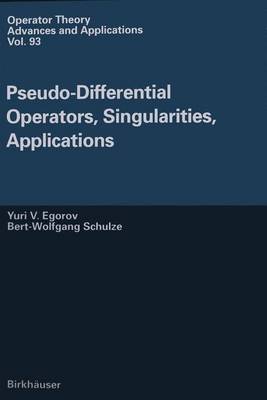Operator Theory: Advances and Applications
1 primary work
Book 93
Pseudo-Differential Operators, Singularities, Applications
by Iouri Egorov and Bert-Wolfgang Schulze
Published March 1997
Pseudo-differential operators belong to the most powerful tools in the analysis of partial differential equations. Basic achievements in the early sixties have initiated a completely new understanding of many old and important problems in analy- sis and mathematical physics. The standard calculus of pseudo-differential and Fourier integral operators may today be considered as classical. The development has been continuous since the early days of the first essential applications to ellip- ticity, index theory, parametrices and propagation of singularities for non-elliptic operators, boundary-value problems, and spectral theory. The basic ideas of the calculus go back to Giraud, Calderon, Zygmund, Mikhlin, Agranovich, Dynin, Vishik, Eskin, and Maslov. Subsequent progress was greatly stimulated by the classical works of Kohn, Nirenberg and Hormander. In recent years there developed a new vital interest in the ideas of micro- local analysis in connection with analogous fields of applications over spaces with singularities, e.g. conical points, edges, corners, and higher singularities.
The index theory for manifolds with singularities became an enormous challenge for analysists to invent an adequate concept of ellipticity, based on corresponding symbolic structures. Note that index theory was another source of ideas for the later development of the theory of pseudo-differential operators. Let us mention, in particular, the fundamental contributions by Gelfand, Atiyah, Singer, and Bott.
The index theory for manifolds with singularities became an enormous challenge for analysists to invent an adequate concept of ellipticity, based on corresponding symbolic structures. Note that index theory was another source of ideas for the later development of the theory of pseudo-differential operators. Let us mention, in particular, the fundamental contributions by Gelfand, Atiyah, Singer, and Bott.
